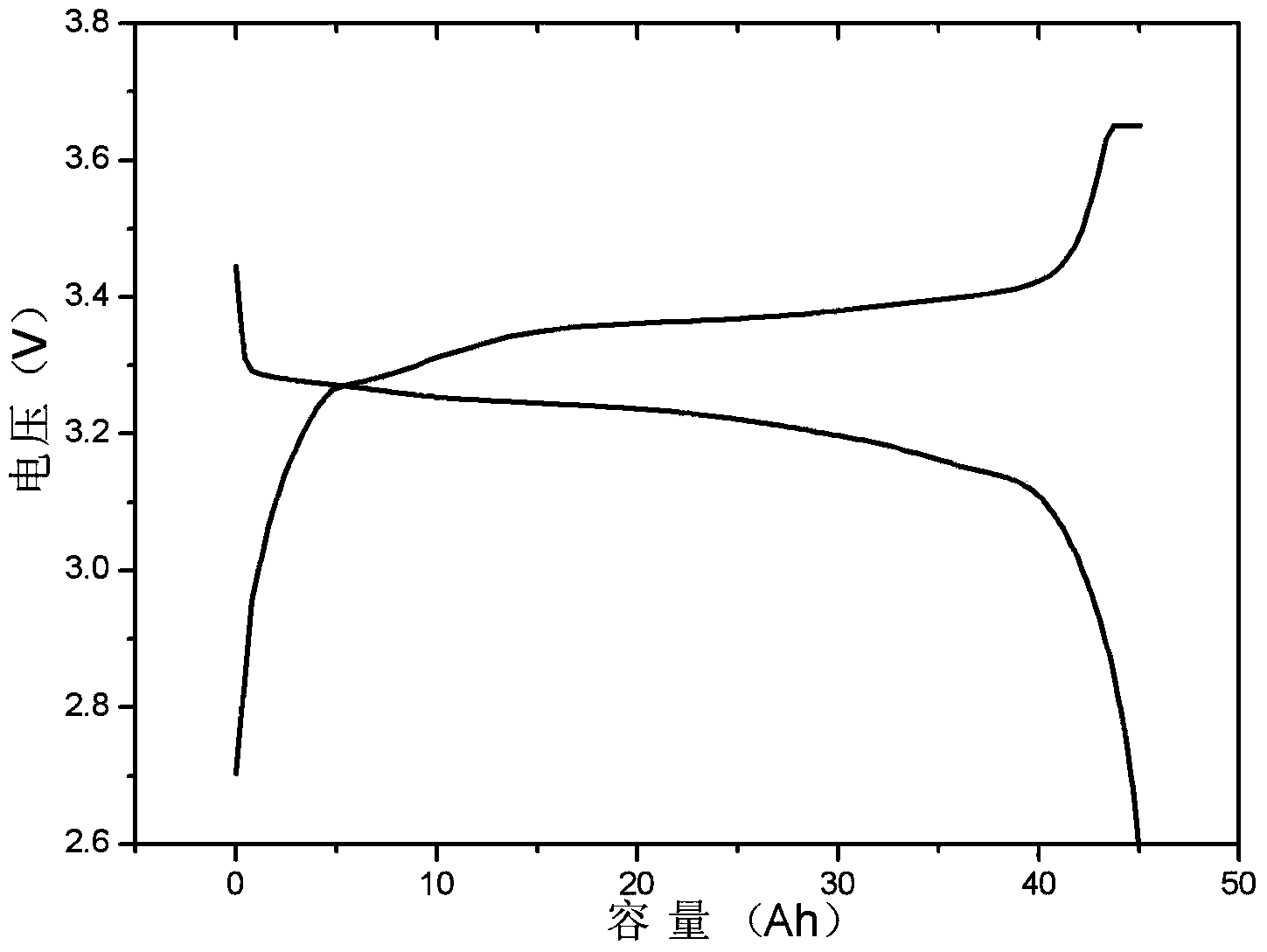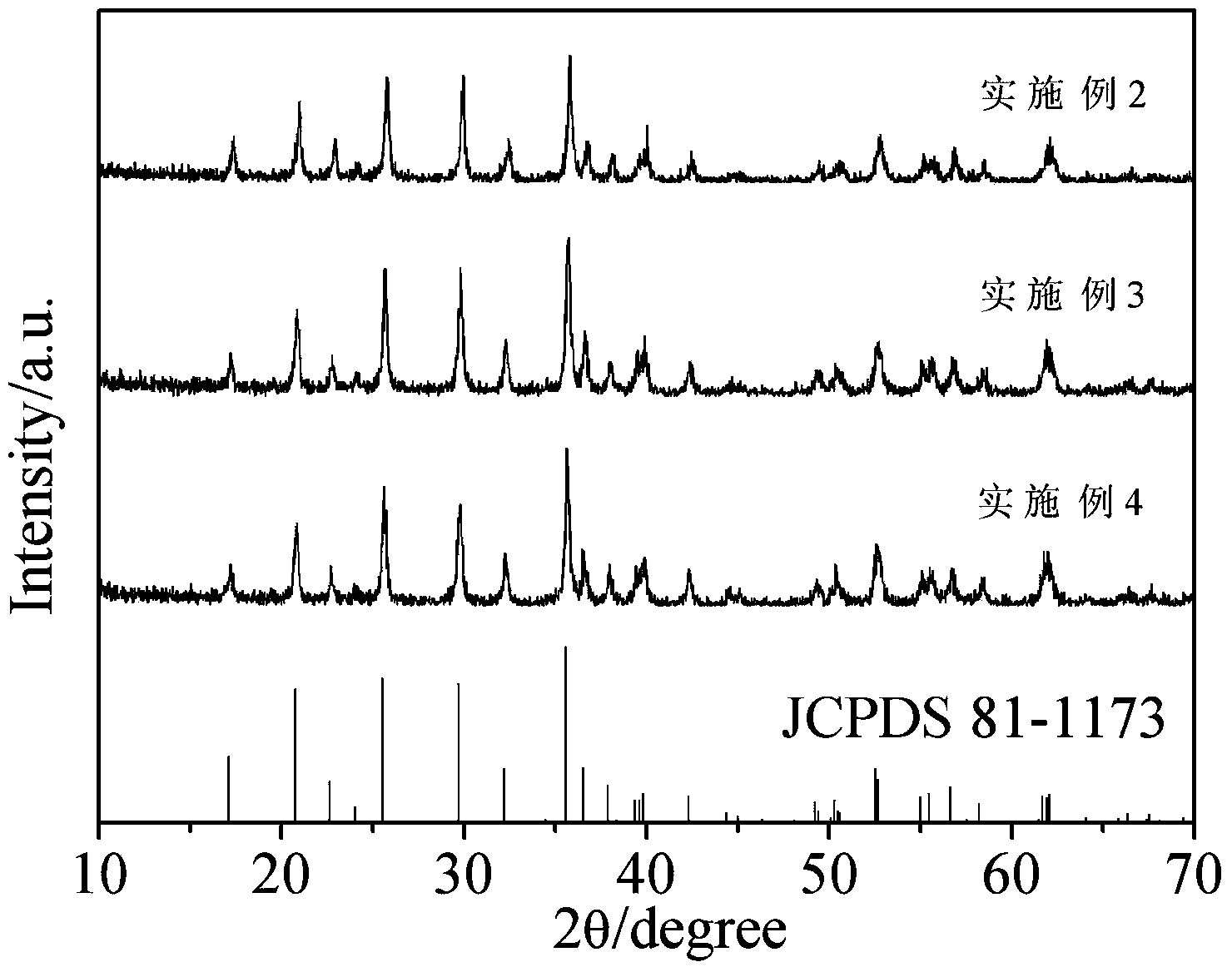Method for recycling positive material from water-system waste lithium iron phosphate battery
A lithium iron phosphate battery and positive electrode material technology, applied in battery recycling, waste collector recycling, recycling technology, etc., can solve the problems of waste of resources, high waste rate, complicated recycling process, etc., and achieve good rate performance, high g The effect of capacity
- Summary
- Abstract
- Description
- Claims
- Application Information
AI Technical Summary
Problems solved by technology
Method used
Image
Examples
Embodiment 1
[0025] Two 60Ah water-based lithium iron phosphate batteries that have undergone 2000 cycles were fixed and fully discharged. After fine disassembly, the complete battery cells were taken out, and the positive electrode, negative electrode and separator were separated to obtain a complete positive electrode sheet. Soak the positive electrode sheet in deionized water for 5 minutes to fully separate the positive electrode active material from the current collector aluminum foil, take out the aluminum foil and pour out the supernatant to obtain a mixture of positive electrode active material and deionized water; dry the above mixture at 80°C for 24 hours Finally, ball milling is carried out to obtain the lithium iron phosphate positive electrode material to be regenerated. The ball milling equipment used is a planetary ball mill with a ball-to-material ratio of 15:1 and a ball milling speed of 350r / min. During the ball milling process, stand still for 30 minutes after every 1 hour...
Embodiment 2
[0027] Get 20g of materials to be regenerated in Example 1, add lithium carbonate to adjust Li:Fe:P molar ratio is 1:1:1, on this ratio basis, further add lithium carbonate, oxalate in the molar ratio of 1:1:1 Iron and ammonium dihydrogen phosphate, adjust the carbon content in the material to 3wt.%. After the element ratio is adjusted, the material is subjected to ball milling. The ball milling equipment is a planetary ball mill, the ball-to-material ratio is 15:1, and the ball milling speed is 350r / min. The ball-milled material was pre-calcined at 400° C. for 5 hours under nitrogen protection, and then calcined at 750° C. for 10 hours to obtain a regenerated lithium iron phosphate cathode material. Using N-methylpyrrolidone as a solvent, the lithium iron phosphate sample, conductive agent (SuperP) and binder were ground into a slurry in a mass ratio of 80:15:5, and coated on aluminum foil to make a positive electrode sheet. Assembled with metal lithium sheets to form a half...
Embodiment 3
[0029] The difference from Example 2 is that the carbon content of the material to be regenerated after impurity removal is adjusted to 2wt.%, and the rest of the conditions are exactly the same. According to the analysis and test of the Land electrochemical performance tester, the 0.1C discharge capacity of the regenerated lithium iron phosphate material is 155mAh / g, the 0.5C discharge capacity reaches 137mAh / g, the 1C discharge capacity reaches 128mAh / g, and the 2C discharge capacity reaches 116mAh / g. 0.1C cycle 50 times capacity without fading.
PUM
| Property | Measurement | Unit |
|---|---|---|
| Discharge capacity | aaaaa | aaaaa |
| Discharge capacity | aaaaa | aaaaa |
| Discharge capacity | aaaaa | aaaaa |
Abstract
Description
Claims
Application Information
 Login to View More
Login to View More - R&D
- Intellectual Property
- Life Sciences
- Materials
- Tech Scout
- Unparalleled Data Quality
- Higher Quality Content
- 60% Fewer Hallucinations
Browse by: Latest US Patents, China's latest patents, Technical Efficacy Thesaurus, Application Domain, Technology Topic, Popular Technical Reports.
© 2025 PatSnap. All rights reserved.Legal|Privacy policy|Modern Slavery Act Transparency Statement|Sitemap|About US| Contact US: help@patsnap.com



